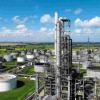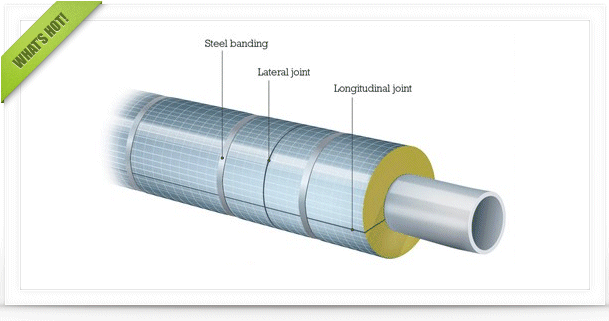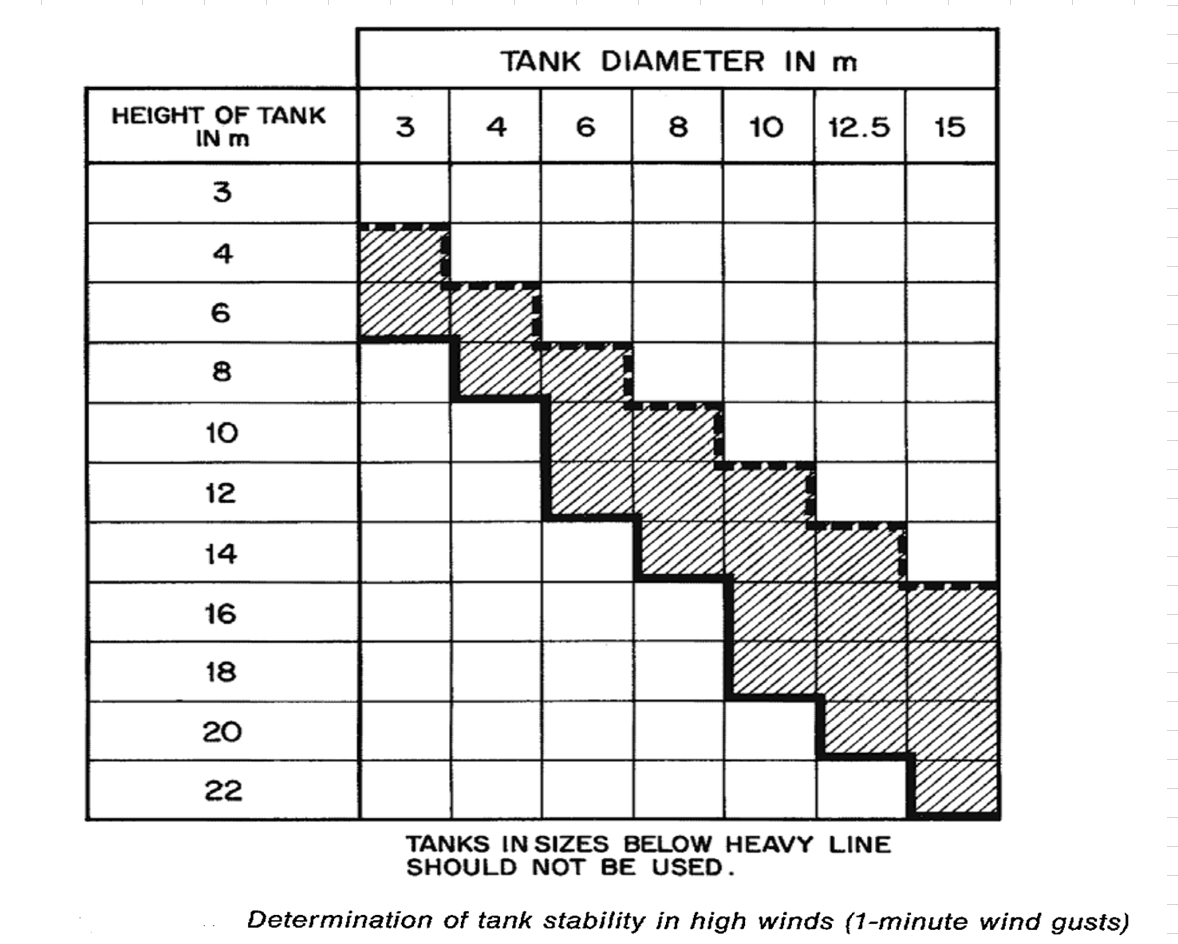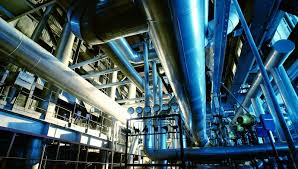|
|
Stack Design For An Indirect Fired Heater
#1

Posted 22 March 2012 - 09:33 AM
#2

Posted 22 March 2012 - 01:22 PM
Please furnish more details about the type of water bath heater. Is it using fuel oil or natural gas for firing to heat the water? What is the fuel composition? What type of a burner is proposed to be used?
The information you have provided is incomplete for anyone of us to provide any guidance.
Regards,
Ankur.
#3

Posted 02 April 2012 - 11:45 PM
#4

Posted 03 April 2012 - 06:40 AM
There is an empirical design method for stack height determination based on SO2 concentration in the flue gases. Following are the calculations:
Stack height may be calculated as per the following formula:
H = 14 * (SO2 in flue gas in kg / h)0.3
where:
H = height of stack in meters
If the fuel consumption is A kg/h and sulphur content in fuel is x% then 1 kg of fuel will give 2x% SO2
Thus the term in the bracket will become
(A*(2x /100))
The minimum stack height under any circumstances shall be 30 m or the calculated value, whichever is higher.
Please note that this is an empirical method solely based on SO2 concentration in the flue gas and does not consider NOx emissions. This method also does not take into account any CO formation due to incomplete combustion of fuel.
The more accurate method would be to perform a dispersion analysis of the flue gases emanating from the stack and find out whether the ground level concentrations (GLCs) of the air pollutants such as SO2, NO2, CO are within acceptable limits as per the air pollutant limits prescribed by the government authorities in the area where your heater is installed. Advanced dispersion analysis software such as Shell FRED and PHAST are generally used to calculate the GLCs of pollutants. You can vary the stack height in the software to achieve the acceptable GLCs of the air pollutants. This will provide you the stack height.
Also refer the links below for stack height:
http://stackheight.envxchange.com/
http://www.arca53.ds...files/chim2.htm
Hope this helps.
Regards,
Ankur.
#5

Posted 04 April 2012 - 03:36 AM
however if you are using natural draft burners it would require a more detailed analysis specifically the draft availability at the bottom for reliable operation of burner and heater
However i do anticipate this particular type is usually a forced draft ... but still you need to provide more info on that.
#6

Posted 05 April 2012 - 12:21 PM
Myself(Murugan) also working on same type of project. My heat duty of th Heater is 6 MMBTU/HR. Fire tube is sized as main fire tube of 36" size and 25 ft length, which is branched into two return firetubes of 24" size and 25 ft length. I am selected riello duel fuel fired burner (RLS 190 equivalent to 7.3 MMBTU/hr) forced type. But we going to use only single fuel fired burner as fuel gas is available from the plant. Could you please advice how to do stack design? if any design manual or literature is available to size the same. Your response is highly appreciated.
So fuel gas will be burnt to produce about 7 MM BTU/h ~ 2 MW of heat.
A "taste" of dispersion study matters can be taken from previous thread http://www.cheresou...6-stack-height , while a few references can be seen in http://www.cheresou...lue-gas-stacks - end of post No 7 (28 Jul 11). But your project concerns quite a small thermal plant, so procedure can be substantially simplified, in communication with local authorities to issue the permit.
Nonhebel in Chapter 19 (Heights of Chimneys, see references above) reports H=37 m as minimum height for dispersion of noxious effluents, which avoids downdraught or plume looping. In this case flue gas velocity at stack exit should be at least 15 m/s at full load. This approach seems conservative for the case.
We supported this approach (H=37 m) for a common stack to receive flue gases of 2x28 MW gas compressors burning natural gas. Noxious ground level concentrations were insignificant even at H=20 m.
Another option is to increase exit velocity (30 m/s per Nonhebel) and lower stack height according to requirement by authorities, or after a quick dispersion study (risk of noise exists for exit velocities over 45 m/s, per Nonhebel). My experience is limited to 60 m stacks with 15 m/s velocity, but the size of the specific thermal unit is so small that the short stack option could be applicable. In a power plant (1997) a "portable" gas turbine of few MW (burning diesel) had a very short stack, about 8 m over the enclosure.
Exit velocity to ambient air will specify stack diameter. Flue gas temperature has to be higher than maximum expected dew point (water or acid) by a margin (say 25 oC).
In pressure drop calculation along the stack, buoyancy has to be taken into account. Example at http://www.cheresou...pansion-of-gas , post No 5.
Edited by kkala, 05 April 2012 - 12:26 PM.
#7

Posted 05 April 2012 - 01:06 PM
The link provided below provides some tables related to emissions based on a selected stack height (9.91 m) and also provides stack velocities for various natural gas fired bolier capacities:
4 MMBtu / hr, 10 MMBtu / hr, 25 MMBtu / hr, 50 MMBtu / hr, 60 MMBtu / hr
For 4 MMBtu/h with a stack diameter of 0.41 the stack velocity is reported as 8.94 m/s with concentrations of the air pollutants well within prescribed limits
For 10 MMBtu / hr with a stack diameter of 0.51 the stack velocity is reported as 14.17 m/s with concentrations of the air pollutants well within prescribed limits.
Refer the tables for capacities of 25, 50 and 60 MMBtu / hr at the link:
http://www.ecy.wa.go..._background.pdf
Hope this helps.
Regards,
Ankur.
#8

Posted 05 April 2012 - 02:21 PM
Thanks for your valuable information. We are using Forced draft burner only. Hope this provided information will help me lot.Murugan,
There is an empirical design method for stack height determination based on SO2 concentration in the flue gases. Following are the calculations:
Stack height may be calculated as per the following formula:
H = 14 * (SO2 in flue gas in kg / h)0.3
where:
H = height of stack in meters
If the fuel consumption is A kg/h and sulphur content in fuel is x% then 1 kg of fuel will give 2x% SO2
Thus the term in the bracket will become
(A*(2x /100))
The minimum stack height under any circumstances shall be 30 m or the calculated value, whichever is higher.
Please note that this is an empirical method solely based on SO2 concentration in the flue gas and does not consider NOx emissions. This method also does not take into account any CO formation due to incomplete combustion of fuel.
The more accurate method would be to perform a dispersion analysis of the flue gases emanating from the stack and find out whether the ground level concentrations (GLCs) of the air pollutants such as SO2, NO2, CO are within acceptable limits as per the air pollutant limits prescribed by the government authorities in the area where your heater is installed. Advanced dispersion analysis software such as Shell FRED and PHAST are generally used to calculate the GLCs of pollutants. You can vary the stack height in the software to achieve the acceptable GLCs of the air pollutants. This will provide you the stack height.
Also refer the links below for stack height:
http://stackheight.envxchange.com/
http://www.arca53.ds...files/chim2.htm
Hope this helps.
Regards,
Ankur.
Thanks.
#9

Posted 07 April 2012 - 04:04 AM
1. Stack of 37 m (post No 6, conservative view) complies fairly well with stack of 30 m (post No 4, assuming practically no sulphur in fuel gas). As noted (post No 6) a lower stack can be approved.
2. Following is written in mentioned N Nonhebel's "Gas Purification Processes for air pollution control", Newness-Butterworths, London 1972.
(α) "A velocity of 30 m/s has been found necessary for short 3 m stacks protruding above the roofs of large office buildings. As with downdraught the National Physical Laboratory has accumulated considerable information on wind - tunnel tests on downwash".
Note: This is assumed close to the situation of a short stack on the "Indirect fired heater".
(β) "The wind velocity giving the highest glc from large plants is 10 m/s. Hence the effluent velocity should be at least 15 m/sunder full load conditions for chimneys having an external diameter at the top up to about 4 m". ......
"Since some compromise is necessary for small installations, the Ministry of Environment advice to local Authorities concerned with approval of chimneys for new boiler plants is that the effluent velocity should be on a sliding scale ranging from 7.5 m/s for boilers up to 13500 kg/h steam output to 15 m/s for boilers rated at 200000 kg/h".
Note: We have applied 15 m/s in general. This is easily realized in case of forced draft (forced type Riello burner). Gas turbine stacks have higher exit velocities (much available ΔP).
3. Reading whole Chapter 19, Height of Chimneys, would promote a more complete picture of factors to be considered in a gas dispersion, apart from the application of the model. Of course a similar article (of similar depth) can be studied in lieu of Chapter 19.
Similar Topics
Wet Scrubber Design For Low Flow Rate Of GasStarted by Guest_SIVAMOORTHY_* , 17 Apr 2018 |
|

|
||
Rupture Disk Tail/lateral Piping Design BasisStarted by Guest_Karthikram_* , 19 Aug 2025 |
|

|
||
Design Of Direct Contact After Cooler (Dcac) For Air Separation UnitStarted by Guest_Paulogeorge_* , 29 Jul 2025 |
|

|
||
Design Capacity Of Hydrogen Pullet During Hydroprocessing Units UpsetStarted by Guest_Divid Kelin_* , 18 Jun 2025 |
|

|
||
Hot Oil Loop / Heating Medium DesignStarted by Guest_Lyne_* , 30 Mar 2024 |
|

|

 FB
FB










